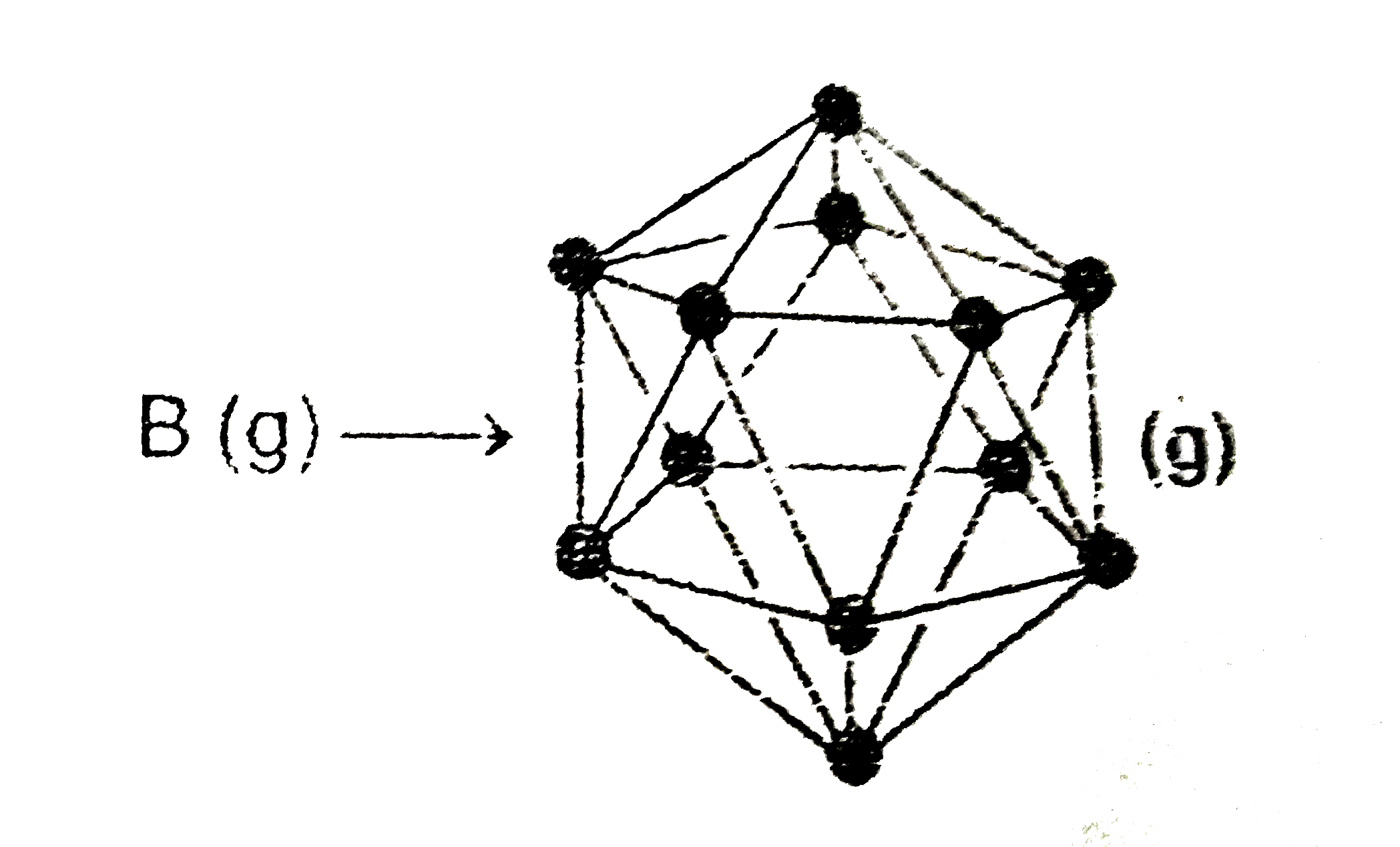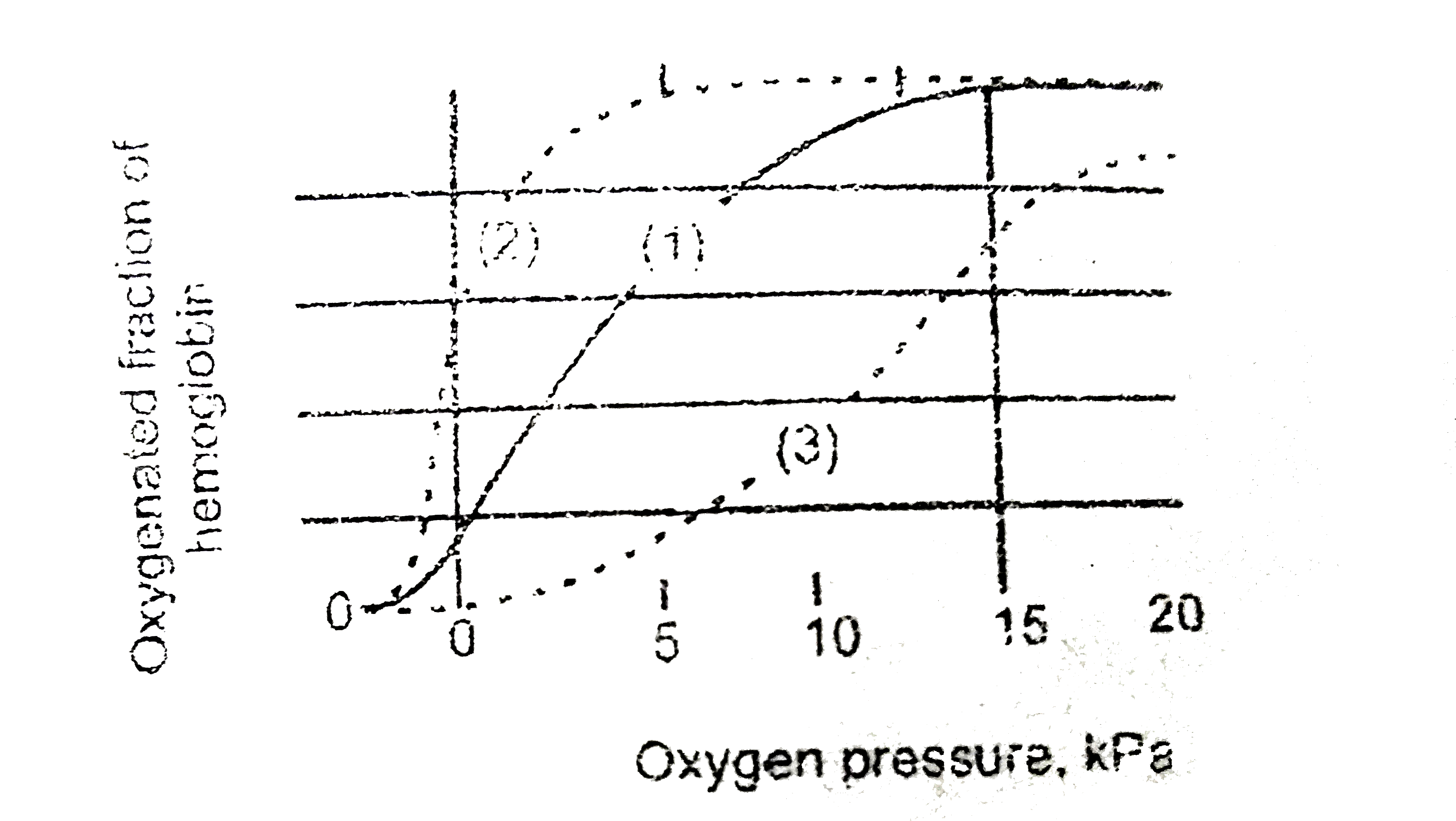Boron exist in different allotropic forms. All allotropic form contains icosahedral units (icosahedral is regular shape with 12 corner & 20 faces) with boron atoms at all 12 corners and all bonds are equivalent.

Calculate heat evolved at constant pressure (in KJ) per mole of boron atoms undergoing above change it ΔHBE(B−B)=200KJ/mol. Report you answer after dividing by 100
The correct Answer is:5
Heat evolved per mol of 'B' atoms =52×200=500KJ
Topper's Solved these Questions
- THERMODYNAMICSBOOK - RESONANCE ENGLISHCHAPTER - THERMODYNAMICSEXERCISE - exercise-3 part-III Advanced level Solutions (STAGE-I)
6 Videos
- THERMODYNAMICSBOOK - RESONANCE ENGLISHCHAPTER - THERMODYNAMICSEXERCISE - exercise-3 part-III Advanced level Solutions (STAGE-II)
38 Videos
- THERMODYNAMICSBOOK - RESONANCE ENGLISHCHAPTER - THERMODYNAMICSEXERCISE - exercise-3 part-1 Advanced level Solutions
30 Videos
- TEST SERIESBOOK - RESONANCE ENGLISHCHAPTER - TEST SERIESEXERCISE - CHEMISTRY
50 Videos
Similar Questions
One of the allotropic form of boron is α− rhombohedral boron. Number of faces and corners in its basic building B12 icosahedral unit are:
View SolutionThe small size and high charge of Al3+ ion gives it a high charge density which is responsible for its tendency to show (a) covalency in its compounds in the gaseous state (b) high hydration energy which stabilizes its compounds in solution, and (c) high lattice energy of its compounds in the solid state. Thus aluminium can forms both covalent and ionic bond.
Like halides of boron, halides of aluminium do not show back bonding because of increase in size of aluminium. Actually aluminium atoms complete their octets by forming dimers. Thus chloride and bromide of aluminium exist as dimers, both in the vapour state and in polar-solvents like benzene while the corresponding boron halides exists as monomer. In boron trihalides the extent of back bonding decreases with increases with increase in size of halogens and thus lewis acid character increases. All BX3 are hydrolysed by water but BF3 shows a different behaviour.
Which of the following reaction is incorrect ?
View SolutionThe small size and high charge of Al3+ ion gives it a high charge density which is responsible for its tendency to show (a) covalency in its compounds in the gaseous state (b) high hydration energy which stabilizes its compounds in solution, and (c) high lattice energy of its compounds in the solid state. Thus aluminium can forms both covalent and ionic bond.
Like halides of boron, halides of aluminium do not show back bonding because of increase in size of aluminium. Actually aluminium atoms complete their octets by forming dimers. Thus chloride and bromide of aluminium exist as dimers, both in the vapour state and in polar-solvents like benzene while the corresponding boron halides exists as monomer. In boron trihalides the extent of back bonding decreases with increases with increase in size of halogens and thus lewis acid character increases. All BX3 are hydrolysed by water but BF3 shows a different behaviour.
Which of the following statements about anhydrous aluminium chloride is correct ?
View SolutionOxygen is of vital importance for all of us . Oxygen enters the body via the lungs and is transported to the tissues in our body by blood . There it can deliver energy by the oxidation of sugars.
C6H12O6+6O2→6CO2+6H2O
This reaction releases 400 KJ of energy per mole of oxygen O2 uptake by blood is at four heme (Hm) group in this protein hemoglobin (Hb).
Free Hm consists of an Fe2+ giving HmO2 complex. Carbon monoxides can be complexed similarily giving a Hm CO complex . CO is poison as it bonds more strongly to Hm than O2 does. The equilibrium constant Kf for the reaction:
Hm+CO⇔HCO ........(i)
is 1000 times larger than the equilibrium constant K2 for the reaction:
Hm+CO2⇔HmO2 ........(ii)
Each Hb molecules can take up four molecules of O2 absorbs a fraction of this amount, depending on the oxygen pressure , as shown in figure1 (curve 1) . Also shown are the curve (2) and (3) for blood with two kinds of dificient Hb . These occur in patients with certain hereditary diseases.

Relevant data , O2 pressure in lungs is 15 KPa , in the muscles it is 2KPa . The maximum flow of blood through heart and lungs is 4×10−4m−3s−1 . The red cells in blood occupy 40% of the volume, inside the cells the concentration of Hb has a molar mass of 64 kg mol−1 R=8.314 Jmol−1K−1 , T=298k . Using the relation between K and the standard Gibbs energy ΔG∘ for a reaction, calculated the difference between the ΔG∘ values for the home reactions (i) and (ii).
View Solution
